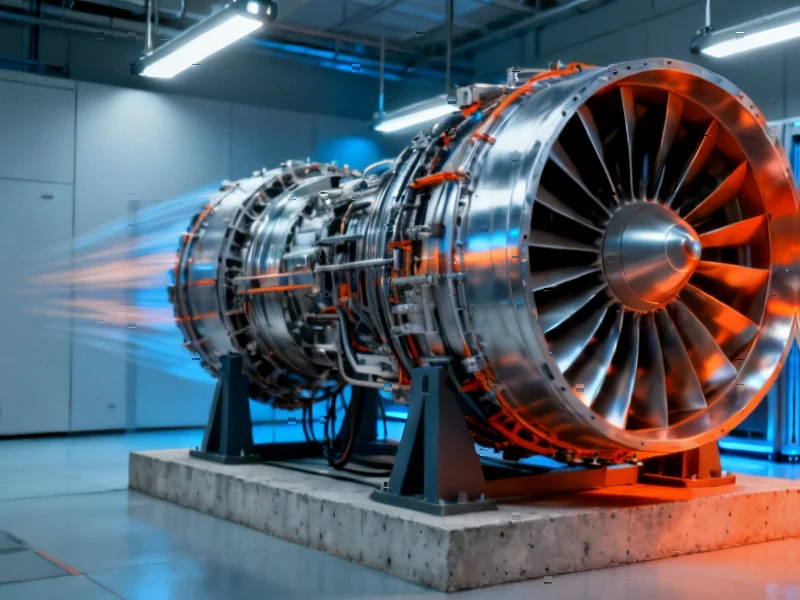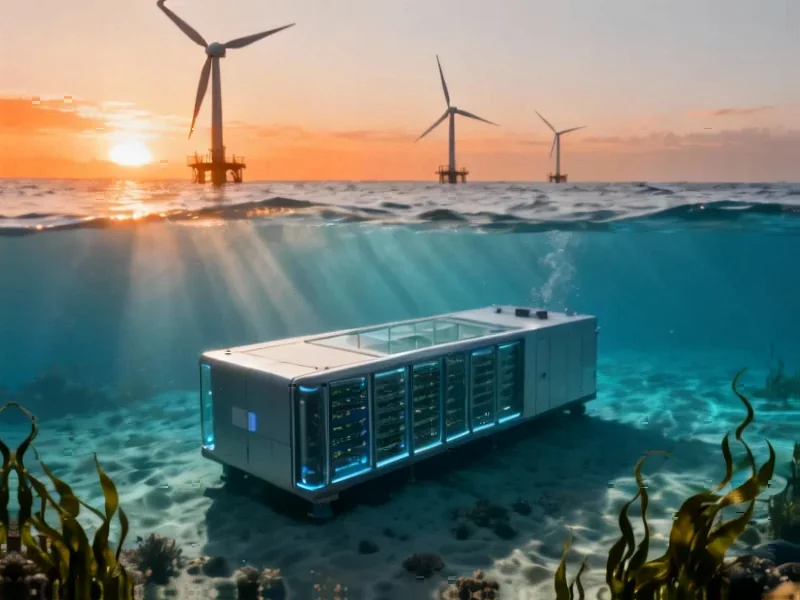From Flight to Light: How Aviation Engines Are Energizing AI’s Growth
While tech billionaires from Sam Altman to Bill Gates champion nuclear fusion as AI’s future power source, today’s energy-hungry data centers are finding immediate solutions in an unexpected place: retired aircraft engines. These repurposed jet cores are becoming the workhorse power generators for AI infrastructure that can’t wait for traditional utility connections.
Table of Contents
The Jet-to-Data Center Conversion Phenomenon
Missouri-based ProEnergy has pioneered the conversion of General Electric CF6-80C2 high-bypass turbofan engines—previously used to power Boeing 767 aircraft—into stationary power plants for data centers. These engines, originally designed for aviation reliability and efficiency, are finding second lives as primary power sources for facilities supporting artificial intelligence workloads.
“The demand for immediate, reliable power has never been greater in the data center industry,” explains Landon Tessmer, ProEnergy’s commercial operations VP. “These modified jet engines provide the rapid deployment and massive power output that AI clusters require during both construction and initial operation phases.”
Engineering Marvel: From Sky to Concrete Foundation
The transformation from aircraft engine to data center power plant involves sophisticated engineering. The CF6-80C2 cores are mounted on concrete slabs or packaged into trailer-sized modules, then connected to electrical systems that can deliver up to 48 megawatts of power. This conversion process maintains the engines’ legendary reliability while adapting them for continuous ground-based operation.
At 48 megawatts, a single converted jet engine generator can power approximately 32,000 American homes—or more relevantly, provide the energy backbone for significant AI computing infrastructure. This power level represents a sweet spot for data centers needing substantial capacity without the lead times associated with building new power plants or grid infrastructure.
The AI Energy Crisis Driving Innovation
Artificial intelligence’s exponential growth has created an unprecedented demand for computational resources, with energy requirements outpacing traditional power infrastructure development. Data center operators are turning to solutions like repurposed jet engines not as temporary fixes, but as strategic power assets that can serve for years.
“These units aren’t just for construction phase power,” Tessmer emphasized during an interview at the World Power show in San Antonio. “They’re designed to serve as primary power sources for years after data centers become operational, with the potential to transition to backup generation once permanent grid connections are established.”, as our earlier report
Environmental and Economic Considerations
While some might question the environmental footprint of jet engine-powered data centers, the approach represents practical sustainability through repurposing. Rather than scrapping serviceable aviation engines, this model extends their operational life while meeting urgent energy needs. The high-bypass turbofan design also offers better fuel efficiency than many traditional emergency generators.
The economics are equally compelling. With 21 such aviation engine generators already sold to data center operators, the model has proven commercially viable. For data center developers facing multi-year waits for utility power upgrades, the ability to deploy 48 megawatts within months rather than years can mean the difference between capturing AI market opportunities or missing them entirely.
The Future of Distributed Power Generation
As AI continues to drive unprecedented energy demands, innovative power solutions like repurposed jet engines demonstrate how industrial cross-pollination can solve immediate challenges. While nuclear fusion remains the distant dream of tech visionaries, today’s practical energy innovations are taking flight from unexpected sources—proving that sometimes the future arrives not from moonshots, but from smart adaptations of existing technology.
The success of these jet engine power plants suggests that other industries might benefit from similar cross-sector repurposing, potentially creating new paradigms for distributed power generation that blend reliability, rapid deployment, and resource efficiency.
Related Articles You May Find Interesting
- Amazon’s Automation Drive Could Displace 600,000 Warehouse Roles by 2033, Docume
- PS5 Surpasses PS3 in US Lifetime Sales, Nears PS4 Milestone Amid Market Shifts
- PS5 Achieves Historic US Sales Milestone, Surpassing PlayStation 3 Lifetime Figu
- The Dirty Data Secret: Why Industrial AI Projects Fail Before They Even Begin
- Beyond the AI Boom: Unpacking ASML’s 50% Surge and Future Trajectory
References
- https://www.geaerospace.com/sites/default/files/datasheet-CF6-80C2.pdf
- https://cbsaustin.com/news/local/expert-speaks-on-how-many-homes-can-be-power…
This article aggregates information from publicly available sources. All trademarks and copyrights belong to their respective owners.
Note: Featured image is for illustrative purposes only and does not represent any specific product, service, or entity mentioned in this article.



